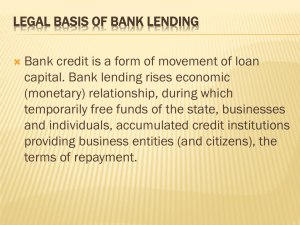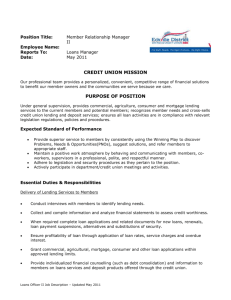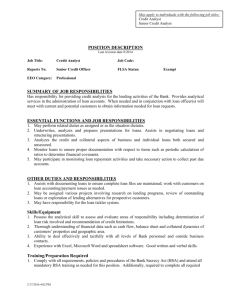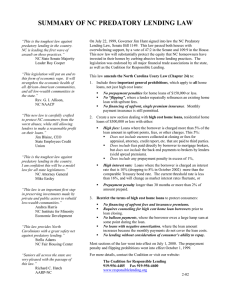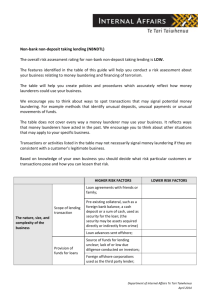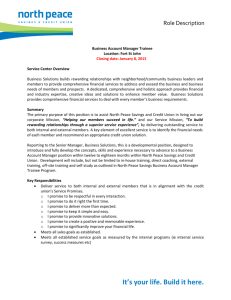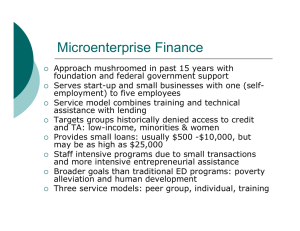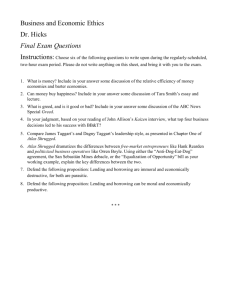A Guide to Lending Pricing
advertisement
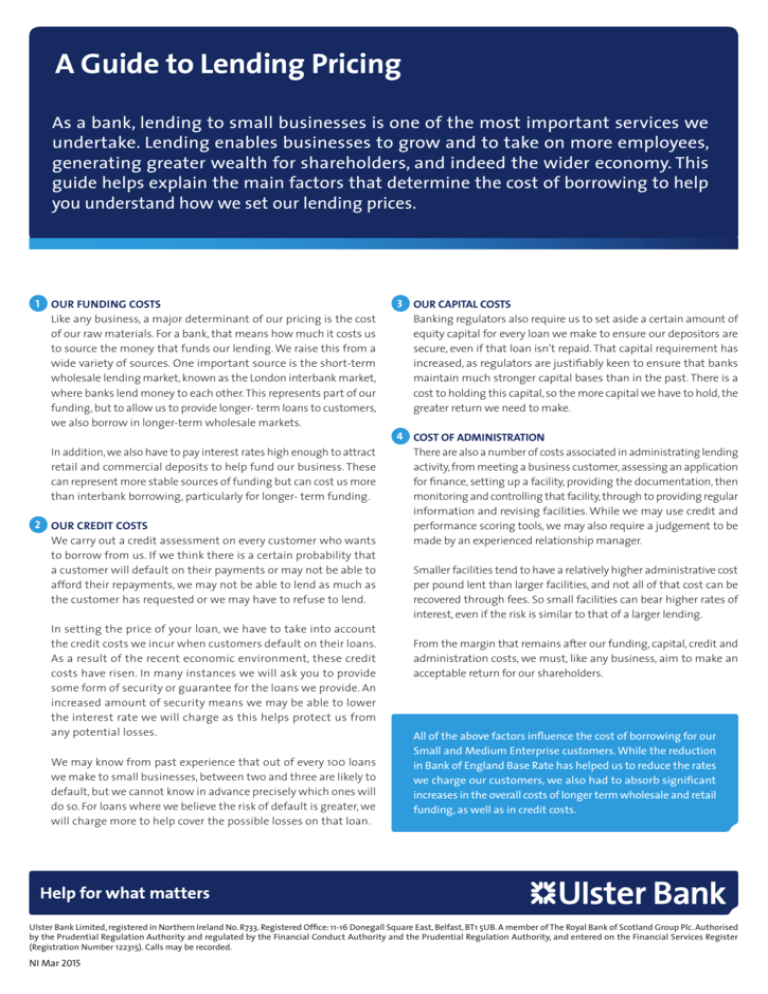
A Guide to Lending Pricing As a bank, lending to small businesses is one of the most important services we undertake. Lending enables businesses to grow and to take on more employees, generating greater wealth for shareholders, and indeed the wider economy. This guide helps explain the main factors that determine the cost of borrowing to help you understand how we set our lending prices. 1 OUR FUNDING COSTS Like any business, a major determinant of our pricing is the cost of our raw materials. For a bank, that means how much it costs us to source the money that funds our lending. We raise this from a wide variety of sources. One important source is the short-term wholesale lending market, known as the London interbank market, where banks lend money to each other. This represents part of our funding, but to allow us to provide longer- term loans to customers, we also borrow in longer-term wholesale markets. In addition, we also have to pay interest rates high enough to attract retail and commercial deposits to help fund our business. These can represent more stable sources of funding but can cost us more than interbank borrowing, particularly for longer- term funding. 2 OUR CREDIT COSTS We carry out a credit assessment on every customer who wants to borrow from us. If we think there is a certain probability that a customer will default on their payments or may not be able to afford their repayments, we may not be able to lend as much as the customer has requested or we may have to refuse to lend. In setting the price of your loan, we have to take into account the credit costs we incur when customers default on their loans. As a result of the recent economic environment, these credit costs have risen. In many instances we will ask you to provide some form of security or guarantee for the loans we provide. An increased amount of security means we may be able to lower the interest rate we will charge as this helps protect us from any potential losses. We may know from past experience that out of every 100 loans we make to small businesses, between two and three are likely to default, but we cannot know in advance precisely which ones will do so. For loans where we believe the risk of default is greater, we will charge more to help cover the possible losses on that loan. 3 OUR CAPITAL COSTS Banking regulators also require us to set aside a certain amount of equity capital for every loan we make to ensure our depositors are secure, even if that loan isn’t repaid. That capital requirement has increased, as regulators are justifiably keen to ensure that banks maintain much stronger capital bases than in the past. There is a cost to holding this capital, so the more capital we have to hold, the greater return we need to make. 4 COST OF ADMINISTRATION There are also a number of costs associated in administrating lending activity, from meeting a business customer, assessing an application for finance, setting up a facility, providing the documentation, then monitoring and controlling that facility, through to providing regular information and revising facilities. While we may use credit and performance scoring tools, we may also require a judgement to be made by an experienced relationship manager. Smaller facilities tend to have a relatively higher administrative cost per pound lent than larger facilities, and not all of that cost can be recovered through fees. So small facilities can bear higher rates of interest, even if the risk is similar to that of a larger lending. From the margin that remains after our funding, capital, credit and administration costs, we must, like any business, aim to make an acceptable return for our shareholders. All of the above factors influence the cost of borrowing for our Small and Medium Enterprise customers. While the reduction in Bank of England Base Rate has helped us to reduce the rates we charge our customers, we also had to absorb significant increases in the overall costs of longer term wholesale and retail funding, as well as in credit costs. Ulster Bank Limited, registered in Northern Ireland No. R733. Registered Office: 11-16 Donegall Square East, Belfast, BT1 5UB. A member of The Royal Bank of Scotland Group Plc. Authorised by the Prudential Regulation Authority and regulated by the Financial Conduct Authority and the Prudential Regulation Authority, and entered on the Financial Services Register (Registration Number 122315). Calls may be recorded. NI Mar 2015

